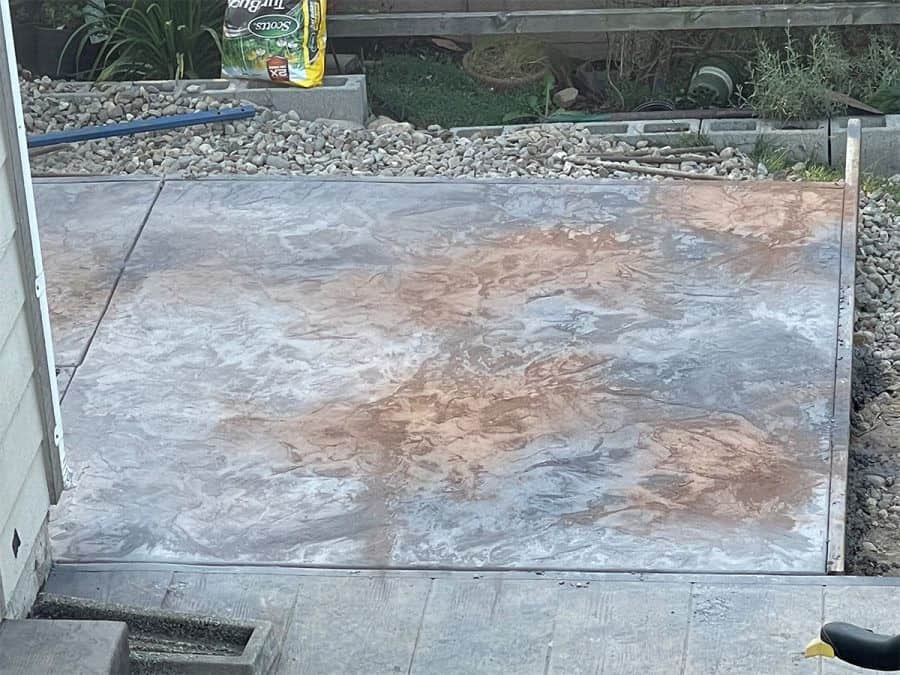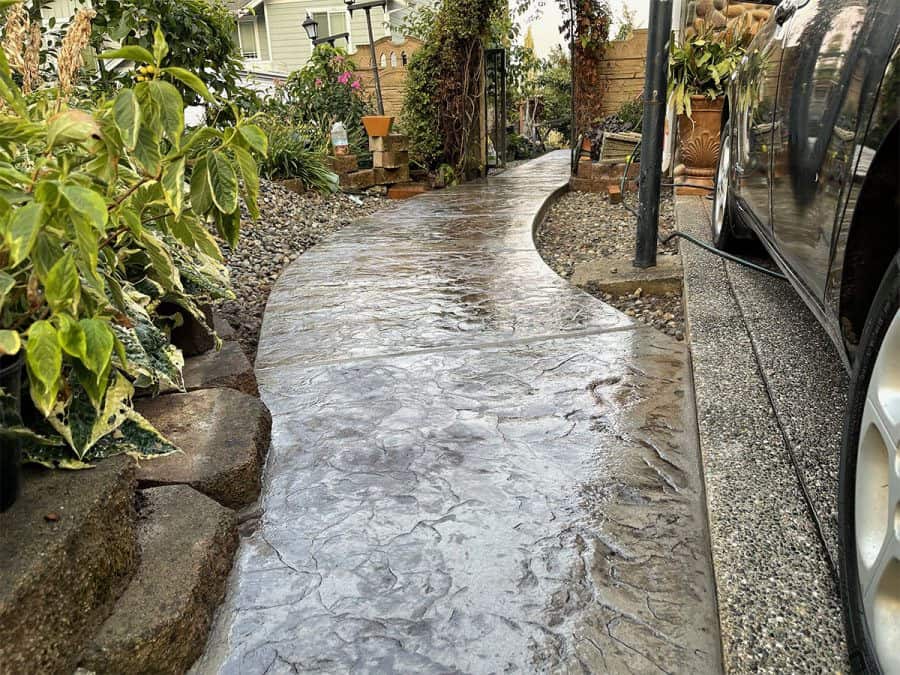Stamped concrete is a popular and versatile paving material that is commonly used for various types of flooring, patios, driveways, and sidewalks. It is created by stamping a mold into freshly poured concrete to create patterns and textures that mimic other materials such as stone, brick, and tile. Stamped concrete is a cost-effective and low-maintenance alternative to traditional paving materials and can be customized to suit a wide range of styles and design preferences. In this article, we will explore what stamped concrete is, its benefits, the process of installation, and some design ideas.
What is Stamped Concrete?
Stamped concrete is a type of decorative concrete that is created by stamping a pattern or texture onto freshly poured concrete. This technique is achieved by using specialized stamps that are pressed into the wet concrete to create a pattern or texture. Once the concrete has cured, a sealer is applied to protect the surface and enhance the color of the concrete.
Stamped concrete can be designed to resemble a wide range of materials such as brick, stone, slate, tile, and even wood. This versatility makes it an ideal option for creating a variety of outdoor living spaces and hardscaping features such as patios, driveways, walkways, and pool decks.
Benefits of Stamped Concrete
There are many benefits to using stamped concrete for your outdoor living spaces and hardscaping projects. Some of the main advantages include:
- Cost-effective: Stamped concrete is a cost-effective alternative to traditional paving materials such as brick, stone, and tile. It is less expensive to install, requires less maintenance, and lasts longer than many other materials.
- Durability: Stamped concrete is incredibly durable and can withstand heavy foot traffic, extreme weather conditions, and regular use. It is also resistant to cracking and chipping, making it an ideal choice for high-traffic areas such as driveways and walkways.
- Low maintenance: Stamped concrete requires minimal maintenance compared to other paving materials. It only needs to be cleaned periodically with a mild detergent and water to keep it looking its best.
- Customizable: Stamped concrete can be customized to suit a wide range of design preferences and styles. It can be designed to mimic the look of various materials, and it can be colored to match the surrounding landscape.
- Long-lasting: Stamped concrete is long-lasting and can maintain its appearance for many years. With proper installation and maintenance, stamped concrete can last up to 25 years or more.
The Process of Installing Stamped Concrete
The process of installing stamped concrete involves several steps. Here is a brief overview of the process:
- Site preparation: The site where the stamped concrete will be installed must be properly prepared. This includes removing any existing concrete or debris, grading the area to ensure proper drainage, and installing any necessary sub-base materials.

- Pouring the concrete: Once the site is prepared, the concrete is mixed and poured onto the area. The concrete is then leveled and smoothed to create a flat surface.

- Adding color: If desired, color can be added to the concrete using various methods such as integral coloring or surface-applied color. The color is added to the concrete mix or applied to the surface of the concrete using a trowel. Our contractor added 4 separate colored powders for a surface applied color after it was stamped, however, different color techniques can be applied before stamping.

- Stamping the concrete: Once the concrete has partially cured, the stamps are pressed into the surface to create the desired pattern or texture. The stamps are removed, and the surface is allowed to fully cure. I seemed to have missed getting pictures of the crew stamping, but will see if my wife snapped some.
- Sealing the surface: Once the concrete is fully cured, a sealer is applied to protect the surface from damage and enhance the color of the concrete. Depending on what type of sealant you use, it can give a wet look. Our concrete guy mentioned you typically want to re-seal once a year, it certainly starts to fade. To cut on costs for a fairly small project with our walkway, we were able to coordinate with our neighbor for having his firepit area done at the same time, here’s a photo of it finished:

Design Ideas for Stamped Concrete
Stamped concrete can be customized to suit a wide range of design preferences and styles. Here are some design ideas to consider for your stamped concrete projects:
- Brick patterns: Stamped concrete can be designed to mimic the look of brick, which is a popular choice for patios and walkways. The brick pattern can be customized to match the surrounding landscape, and color can be added to enhance the appearance.
- Stone patterns: Stamped concrete can also be designed to resemble the look of natural stone, such as slate or flagstone. This is a popular option for pool decks and outdoor living spaces.
- Tile patterns: If you’re looking for a more modern or Mediterranean style, stamped concrete can be designed to look like tile. This is a great option for a courtyard or outdoor dining area.
- Wood patterns: Stamped concrete can even be designed to look like wood, which is an ideal option for a deck or patio. This is a great alternative to traditional wood decking, which requires regular maintenance and can be prone to rotting and warping. We also had a back patio poured and with with a wood pattern for the stamped concrete on it. The sealant on this one was a semi-gloss.

- Custom designs: Stamped concrete can be customized to create unique designs and patterns. For example, you can create a custom logo or design for your business or use a stencil to create a custom pattern for your driveway.
Sealing Stamped Concrete
Sealing your stamped concrete helps act as a moisture repellent. It eliminates or reduces water and contaminants from penetrating into the porous concrete. It also gives a finished look. Sealants come in various finishes from satin to gloss. Here’s a photo showing the difference between our back patio as it was getting sealed. This particular sealant didn’t have the high-gloss, wet look when dry (see the picture above), however, compared to the raw concrete it makes a huge difference.

Summary
Overall, stamped concrete is a versatile and cost-effective paving material that offers many benefits. It can be customized to suit a wide range of design preferences and styles and requires minimal maintenance compared to other paving materials. With proper installation and maintenance, stamped concrete can provide a durable and long-lasting surface for your outdoor living spaces and hardscaping projects.

